Fashion Stories and the Story of the corset - Visual Diary
- Cath @MyMarketingToolbox

- Feb 20, 2022
- 10 min read
Corset, from an instrument of torture and repression to a symbol of erotism. This is the statement I made in the title of this new episode of My Fashion Stories Box Podcast. And these are the aspects of this now piece of lingerie that I want to cover with you today.

When it comes to corsets, you might have different images coming in mind: the hourglass silhouettes of the 19th century, the rigid bodice of the Renaissance time, an outfit putting the emphasis on the breasts, waist and hips of women in a way to make them more appealing, sexier for men, and so on.
The origins of corsets
But first, what is a corset? The word itself takes its origins in the latin word “Corsetus” coming itself from “corpus”, meaning body, which, starting from the 13th century, would refer to the surcoat, an outerwear looking like a coat worn by men, or to the coat of mail, also worn by men. Then, during the 14th century, the corsetus would refer to a piece of formal outfit worn by lords during meetings to testify of the importance of their status inside the society of that time. Nothing to do with a type of outfits worn by women…
The first corset example for women would be seen during the Antiquity where in Crete, during the Minoan civilisation, some women would use leather belts tightly fitted around the waist to mark it as some statues representing goddesses would suggest. And then the practice would completely disappear.
The coming back of corsets can be traced down to the beginning of the Renaissance time.
In her book “The Corset: A Cultural History”, Valerie Steele, one of my favorite fashion historians, links the development of corset wearing in Europe with Catherine of Medici, during the Renaissance time.

At that time, it was worn only by the women of the nobility and would translate the uprightness and the firmness of the soul and lifestyle of those people who aimed at governing the others and who wanted to be separated from them.
Over the centuries, this corset fashion would spread through the lower classes and by the beginning of the 20th century, every woman, no matter her social status, would wear a corset.
Construction of a corset
Over the time women wore corsets, we can notice some evolution in shapes but the basic construction will remain the same.
At least one layer of very densely weaved fabrics, an external decorative fabrics and a lining could be added.
A large strip of wood, metal, ivory or bones to have a strong rigidity in front of the corset. This part was called a stomacher and could be detachable.
The boning, several long and thin pieces made with, first whalebone until the 19th century, and then with steal or iron starting from the Industrial Revolution to ensure more rigidity and flexibility. The boning was wrapped inside a piece of fabrics.
And finally lacing with eyelets to help fit the corset around the waist and give it the desired shape.
This construction won’t evolve much until the First World War when women would stop wearing corsets. They could be longer or shorter, including the breasts or the hips. However, they were always tightly laced about the waist and would be an inseparable element to form the distinctive feminine silhouettes of each period.
The evolution of corsets
During the 16th century, the corset will give a conical form to the upper body, flattening the breast and emphasizing the waist with a pointy ending. It would almost act as an armor. The corset was also having straps to maintain it on the shoulders.
Examples of corsets and portraits of women during the 16th century
This conical form of the corset will last for some centuries, reaching its pick during the 18th century when it was part of the court outfit for women and would act, not only as a way to compress the waist and the ribs, but also to give a beautiful way of holding the head thanks to the straps which will force the shoulders to go behind and the spine and head to be straighter.
Example of corsets and portraits of women during the 17th century
Examples of corsets and portraits of women during the 18th century
At the French Revolution, in the will to get rid of privileges and being seen as an instrument of idleness linked with the royalty, corsets would be abandoned… only to come back stronger during the 19th century, establishing the now well famous beauty ideal of the hourglass silhouette. Here the corset will change a bit. It will be rounder around the hips, the breasts won’t be flattened anymore, on the contrary, they will be separated and maintained to be shown and the straps will also disappear.
The 19th century saw a large variety of dress styles for women, 5 which was, for that time, quite a lot. And the corset will become shorter or longer to accommodate these different styles.
Examples of corsets and portraits of women during the 19th century
Alongside with the hourglass silhouette created with the corset, another silhouette will emerge at the end of the 19th century: the S bend silhouette, or pigeon silhouette, also achieved with a corset, which was slowly looking more and more like a large belt worn at the waist, as its first ancestor worn by Cretan women during the Antiquity.
Examples of corsets and portraits of women during the Belle Epoque era (end of 19th century - beginning 20th century)
This last silhouette is associated with the Belle Epoque time and would last until the first decade of the 20th century when Paul Poiret will set himself on the mission to free women from corsets and the First World War will make it possible for all women.
As you could see, throughout its history the corset evolved to translate the ideal feminine silhouette of the time. It came from being an outerwear women would be proud to show and to decorate to show their position, or their family slash husband’s wealth to becoming an underwear to be hidden from the eyes of the society.
In any case, the corset’s mission remained the same during all these centuries: creating a tiny waist by compressing all the other parts of the upper body of women.
Corsets and men
However, if you remember well from the beginning of this episode, this corsetus of the 13th century was worn by men… What about after?
Well corsets for men were much of a rarity and were more linked with military and how to have a straight posture when parading, not an everyday wear for sure! But, as for every rule you have an exception, and you will have men who would, willingly wear corsets everyday. These men were the dandys and they lived at the beginning of the 19th century.

At that time, the lifestyle was dominated by elegance and grace even for men. And, the best way to achieve this elegance and grace was to copy women and to wear corsets. They were trying to achieve an athletic silhouette, the ideal man’s silhouette of that time: long neck, broad shoulders, thin waist, full hips, slim legs. To achieve this silhouette, everything was possible: layers of cravats around the neck, paddings at the shoulders and hips and… corset at the waist.
As you can imagine, this led to absolutely hilarious caricatures of men taking the corset from their wives, gathering together to dress and exchange tips, being surrounded by servants to help them lacing their corsets.
You had on one side feminine men following a feminine fashion and, on the other side, masculine men, macho, following a masculine, strict fashion. However, the macho men’s fashion won over the feminine men’s fashion and dandys stopped wearing corsets either because they finally understood how uncomfortable corsets were or because of the society pressure according to which wearing corsets was a sign of vanity…
No matter what, starting mid 19th century, it was acceptable for men to wear corsets only in the army for horsemen to keep the right posture or if you had some health conditions to maintain your spine right for example.
Wearing a corset to hide a big belly because you were getting old, you didn’t have much physical activities or you didn’t have a pleasant silhouette wasn’t part of the deal neither…
Symbolism of corsets
As we saw, corset was more a woman’s business than a man’s one. And this fact was not that innocent.
Corsets had many significations over times: a way to show the uprightness and the firmness of the soul and lifestyle of the nobility, a way to show that you were a proper and respectable woman, who would dare to go out without a corset?!, a way to underline your physical attributes, a way you were a good party to marry thanks to having the thinnest waist.
From my side, I see corsets as a way for men to take control over women. By imposing them a restrictive piece of clothing, on the top of which you also have to add the length and volumes of the dresses, that prevents women to normally breath and more and forces them to have someone to help them get dressed, men were making women dependent from them. They were making sure that women wouldn’t be able to walk, run, correctly breath, eat or drink so that they stayed in one place, controllable, under supervision. “Smile, be beautiful and shut up”. It was a way to make sure women wouldn’t be able to challenge them, to requestion them.
This is a position shared by Leigh Summers, an historian specialized in the 19th and 20th century fashion, the body and sexuality. According to her, corsets were a constrain imposed to women and would reflect the societal misogyny of the 19th century.
Valerie Steele has another point of view on that matter. For her, corset is first and foremost a piece of clothing from the woman’s wardrobe and represents a form of freedom of expression women could have through the control of their dresses and the control over their own body.
Not sure I would feel free to express myself nor I would have any control over my body, should I have to wear a corset… What about you?
Corset and health
It’s interesting to see how this seemingly innocent garment can be so controversial, right? What’s not controversial though, was the impact corset had on the wearer’s health. And, starting from the 18th century, many people started to be quite vocal about the consequences of wearing corsets so tightly laced.
Philosophers as Jean-Jacques Rousseau will call the corset the body press. In 1770, a book entitled “The Deterioration of the human race through the usage of corsets” depicted the consequences on the body of wearing corsets as interfering with breathing correctly, preventing the blood reaching the head and leading to hernia. Not so sexy anymore, right?
Few years later, in 1783, the Emperor Joseph the 2nd of Austria would start a campaign against the corsets and would even publish a decree to forbade a certain category of people to wear corsets, as in orphanages, convents and any educational institutions. Even Napoleon called the corset “the murderer of the human race”.
The corset was responsible for the constriction of internal organs, the diminution of the lungs and stomach capacities, muscular atrophy or skin irritations among other festivities.
In a nutshell, everybody was against the corset: women, philosophers, doctors, feminists and even moralists and religious people (think about corset as a sign of vanity, emphasizing the body).
At the very beginning of the 20th century, in France, the Doctor Marechal even tried to pass a law to forbade women under 30 years old of wearing a corset (after 30 years old, no problem, on the condition you weren’t pregnant), to regulate the sales of corsets with provisions of fines and even 3 months in prison in case of infringement. The law never passed.
Corset and fashion designers: an erotic instrument
It gives an idea to what extend people were trying to get rid of the corset as a danger for women’s health. But this is where you see the power of fashion. If it’s trendy to wear a corset, then no matter the costs, women would wear corsets. And you would need to wait for the next fashion, for the next trend to see if the corset will be included or will disappear.
Luckily for us, the fashion was starting to change at the beginning of the 20th century and after the First World War corsets would be replaced by less restrictive underwears which would act more as a wear to blur the silhouette than a way to emphasize it. Bras, bralettes, slips will take over.
Nowadays, corsets are more associated with a certain lifestyle or sexual preferences than to a mandatory underwear. This erotization of the corset dates back to the 19th century, again, and is linked with the creation of a fantasized, and irrealistic let’s be honest, female body: big boobs, thin waist, large hips. Does it ring a bell? Yes of course! The hourglass silhouette. The corset helps achieving this man’s fantasy and becomes an erotic object.
The fashion industry will have another take on it. After centuries of having it as a way to create the most ideal silhouette for women, fashion will now play with the erotic connotations linked with this ideal silhouette and its object. Everything about imagination, fantasy, desires and dreams. The 70s will be quite prolific on that with the young Vivienne Westwood looking back at the 18th and 19th centuries fashion with a touch of punk. Corsets play an important part in her collections up to nowadays.
Vivienne Westwood and her corset inspiration. Note the corset for men on the 3rd picture from her AW 2014 collection.
Chantal Thomass will put the corset as the seduction tool in her lingerie lines, also starting from the 70s. These two women will transform the corset into a powerful tool through which women would take control over their own desires and affirm themselves and their powers over men and their desires with an outfit used before to control women.
Chantal Thomass and her corset inspiration.
In the 80s, Thierry Mugler, Jean-Paul Gaultier will also pay tribute to the power of women through the corset. You may have in mind the famous pink corset Madonna wore during her “Blond Ambition” tour in the 90s. This corset was designed by Jean-Paul Gaultier and created the scandal at that time.

Corsets by Jean Paul Gaultier and gender transcendence.
Corsets by Thierry Mugler.
Other designers will follow: Christian Lacroix, John Galiano, Yves Saint Laurent… Corsets are now part of the fashion show, to sublimize the female body rather than to oppress it.
Corsets are transformed into outerwear, something to show off, something not to be ashamed of. They are not this delicate piece of intimates happy few, generally the husband, had the privilege to see, thus maintaining the fantasy and desire. They are now outerwear you wear on the top of a shirt or a dress. In a sense, the corset takes back its original place: to be seen and not to be hidden.
And, even if corsets are the symbol of feminity and feminine sexuality, they can also be a symbol of gender transcendence. Just look at Jean-Paul Gaultier, the master to blur gender barriers, and him making men wearing corsets too. And here, we come back to the dandies and their corsets, gender fluid people before their time.

So, is the corset to become more than a symbol of erotism and a gender fluid fashion item?
In any case, what a journey for a small piece of clothing!
Feel free to follow the podcast My Fashion Stories Box on your favorite podcast platform, on Instagram and on the blog for a visual diary alongside each episode.
See you there!
Cath @MyMarketingToolbox
--------------------------------------------------------
Main sources:
- Vogue France
- Vogue.com
- Wikipedia
- Metropolitan Museum
- Museum at FIT
- Victoria and Albert Museum
- Chateau de Versailles







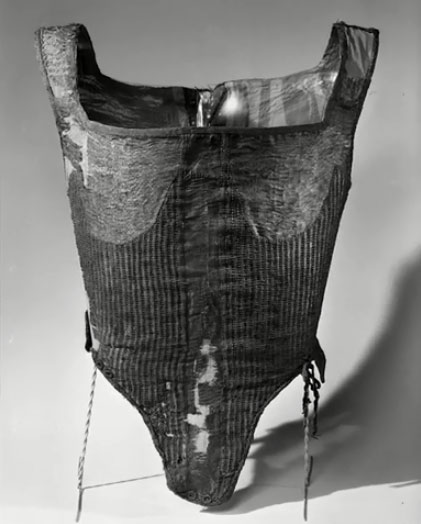

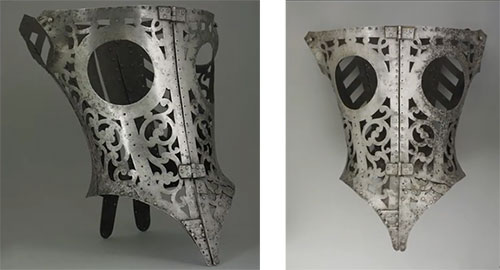



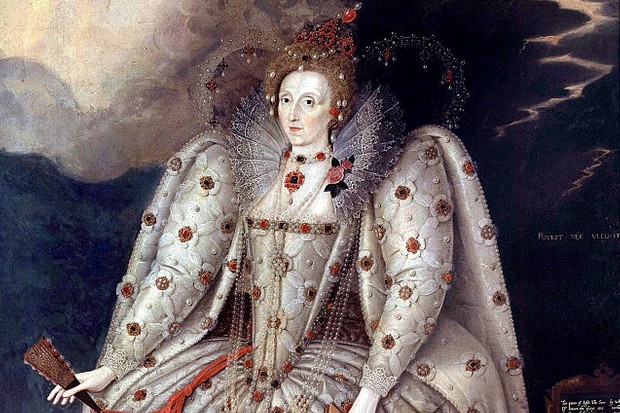













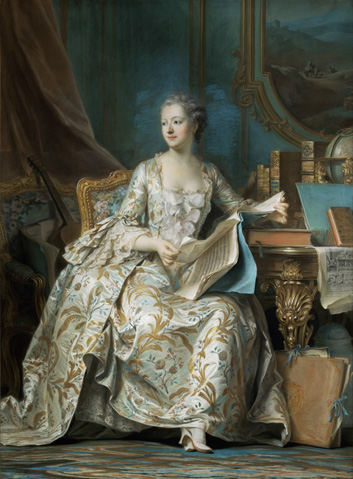









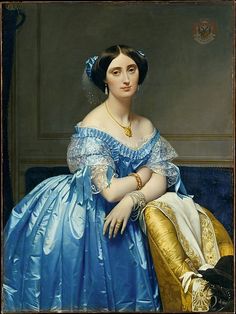



























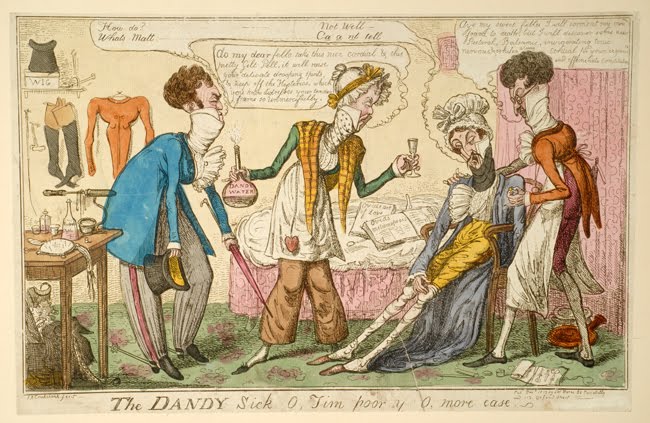

































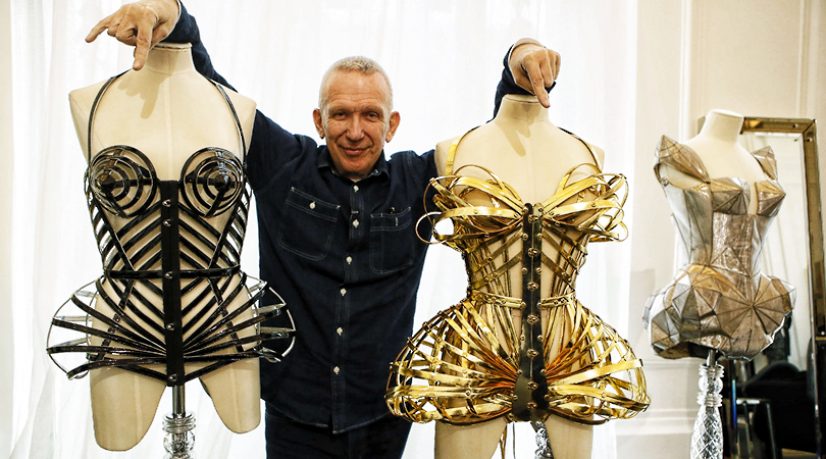











Comments